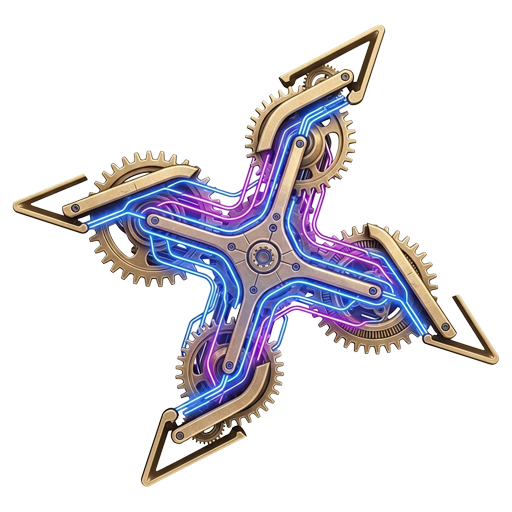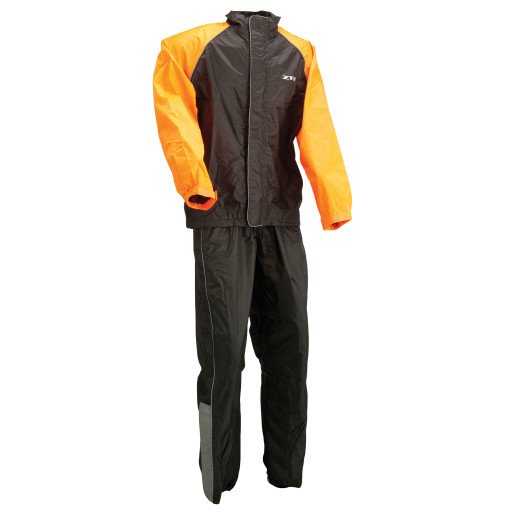In the realm of motorcycle gear, there exists a category of equipment governed not by the glamour of high-performance specifications, but by the stark reality of environmental necessity. Rain gear is the quintessential example—a tool acquired not for the thrill it provides, but for the misery it prevents. The Z1R Rain Suit enters this market as a cost-effective, two-piece solution designed for the pragmatic rider. Our analysis moves beyond the price tag to deconstruct its design, materials, and functional integrity. This is not a question of whether it will win style awards, but whether it will honor its core mandate: keeping the rider dry and focused when the skies turn hostile.
Deconstruction of a Barrier: Materials and Architecture
The fundamental principle of effective rain gear is the creation of an impermeable barrier against water ingress, without simultaneously creating a personal sauna for the rider. The Z1R suit is built from a waterproof, wind-resistant, and breathable non-woven textile. This material choice is a critical balancing act. The “non-woven” characteristic suggests a synthetic polymer fabric, likely polyester or polypropylene, valued for its hydrophobic properties and durability. The term “breathable” is key; it implies a microporous structure or coating that allows water vapor (sweat) to escape while blocking larger liquid water molecules—a foundational concept borrowed from high-end technical outerwear.
The integrity of this barrier is not solely dependent on the fabric, but on the construction methods. Z1R has specified that all seams are fully taped. This is a non-negotiable feature in any serious rain gear. A sewn seam, by its nature, introduces thousands of puncture holes into the fabric. Without a waterproof tape thermally bonded over these seams, they become primary points of failure. The inclusion of this feature demonstrates a competent understanding of foul-weather engineering.
The jacket’s architecture features a full-length front zipper, shielded by a hook-and-loop storm flap. This redundancy is crucial. A zipper, no matter how water-resistant, is a potential weak point under wind-driven rain. The storm flap acts as a secondary line of defense, deflecting the direct assault of water and air.
Ergonomics and Rider-Centric Features
Utility in the saddle is defined by more than just dryness. The Z1R suit incorporates several features designed to address the specific challenges of riding in the rain.
-
Generous Cut: The suit is cut to fit over existing riding apparel. This is a practical necessity, acknowledging that rain gear is an outer layer, not a primary piece of protection. The generous sizing prevents binding and restriction of movement.
-
Adjustability: The jacket includes adjustment points at the waist and cuffs, while the pants feature an elastic waistband with an adjustable belt. This allows the rider to tailor the fit, reducing the “billowing” effect that can occur at speed, which is both distracting and fatiguing.
-
Heat-Resistant Inner Knee Panels: This is a thoughtful and critical detail. The inner legs of a rider are in close proximity to hot engine and exhaust components. The inclusion of heat-resistant material in this high-contact area prevents a catastrophic failure of the waterproof membrane and potential injury.
-
Quarter-Length Leg Zippers: Donning and doffing rain gear, often on the side of a road, is a cumbersome process. The leg zippers facilitate easier entry and exit, especially over bulky riding boots.
-
Elastic Boot Stirrups: A simple but effective feature. These straps prevent the pant legs from riding up at speed, which would otherwise expose the boot and shin to water ingress.
-
Visibility: In low-light and rainy conditions, visibility is safety. The suit incorporates reflective piping on both the jacket and pants, enhancing the rider’s conspicuity to other motorists.
Performance in the Field: The Final Verdict
The Z1R Rain Suit is an exercise in focused design. It makes no pretense of being a four-season, multi-functional piece of adventure armor. Its purpose is singular: to provide a reliable, waterproof shell when conditions demand it.
The selection of a breathable, non-woven fabric with fully taped seams provides a solid foundation. The feature set—from the storm flap and adjustability to the heat-resistant panels and boot stirrups—reveals a design process informed by real-world riding experience. While it may not feature the branded materials of its more expensive counterparts (e.g., Gore-Tex), the principles it employs are sound.
The ultimate measure of this suit is its reliability. It is a tool designed to be stowed away, forgotten until needed, and then deployed with the expectation of flawless performance. Based on its construction and feature set, the Z1R Rain Suit is a competent and pragmatic solution. It bypasses the allure of high-tech branding in favor of essential, proven features, offering riders a functional and accessible defense against the elements. It is a piece of equipment that respects the universal engineering principle of doing one job and doing it well.

